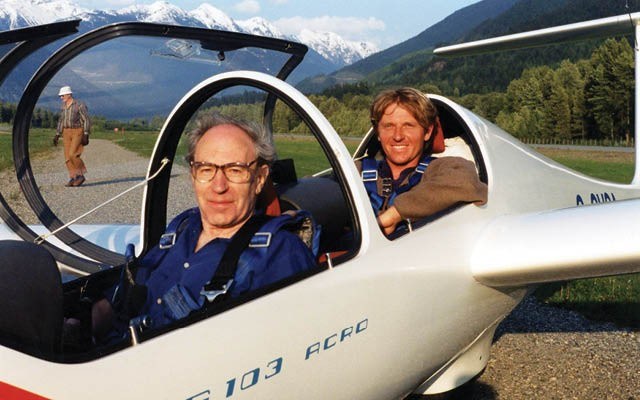The Transportation Safety Board (TSB) of Canada has completed its investigation into a 2013 mid-air collision that killed four people in the skies over Pemberton.
The June 29, 2013 collision between a Cessna 150 and a powered glider, "was caused by the failure of the see-and-avoid principle as the sole means of collision avoidance," the TSB's report said.
"It was a tragic event and an unbelievable set of circumstances that lead to these things, but that's also the kind of nature of the work environment that we work in," said Geoff Doran, chief pilot with Blackcomb Aviation.
Pemberton's Rudy Rozsypalek was killed in the crash, along with 21-year-old Mohnish Paul, a tourist from India who was a passenger on Rozsypalek's glider. Also killed were Terence Gale, 42, and his spouse Rita Turnbull, 51, the pilot and passenger of the Cessna.
"That accident impacted us not only because we fly in the area, but also because Rudy was a friend of ours and a friend of our company," Doran said.
"We worked very closely alongside him out at the Pemberton base, so it makes us take a second look at how we're outfitting our aircraft and the things we're doing to use technology to improve safety within our fleet."
The weather was clear and the winds were calm on the day of the June 2013 collision, the TSB's report said, but "the converging tracks of the two aircraft caused blind spots for the pilots.
"This factor, coupled with human vision limitations, offered reduced opportunities for the pilots to avoid the collision."
The right wings of both aircraft were shorn off in the collision, and the resulting collision with the ground below was not survivable.
The report concluded by saying that if the see-and-avoid principle is relied upon as the sole means of collision avoidance when flying under Visual Flight Rules, there is a continued risk of collision.
As a commercial aviation fleet, Blackcomb Aviation employs traffic-collision-avoidance systems in its aircraft.
But it's unlikely that such technology will be mandated in recreational aircraft, Doran said.
"The problem is the technology is expensive," he added.
"For the everyday user — just a private aircraft owner — it can be a serious expense, and for Transport Canada to have to mandate something like that would have a serious effect on recreational flying."
As such, recreational aircraft in the coast-mountain area will likely continue to rely on "see and avoid" principles.
"It's just not the type of corridor where you're going to see somebody coming in and dictating, or actively tracking aircraft,... and having somebody on the ground provide separation for aircraft," Doran said.
"I don't think that will change."
It's up to pilots to stay vigilant, Doran added, and the 2013 incident remains a painful reminder of just how important that vigilance is.
"We've learned some lessons from this, but we've learned it at a great expense," Doran said.
"We don't take those lessons lightly because we understand the cost."
The full report can be viewed online at www.tsb.gc.ca.




